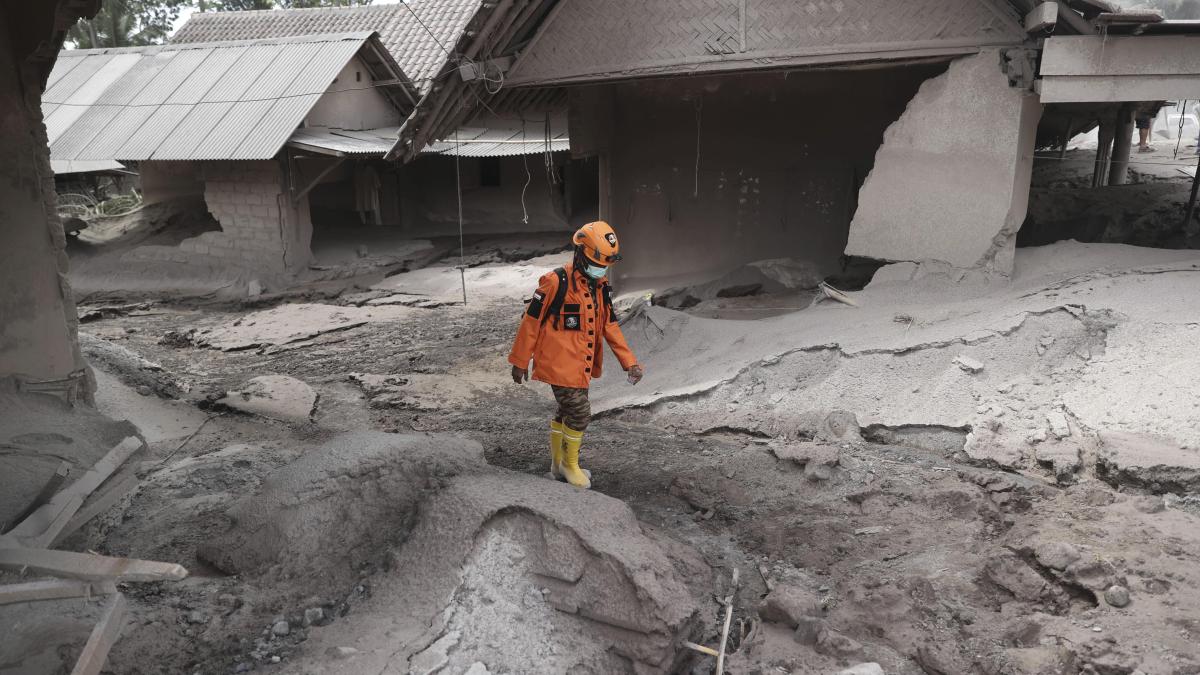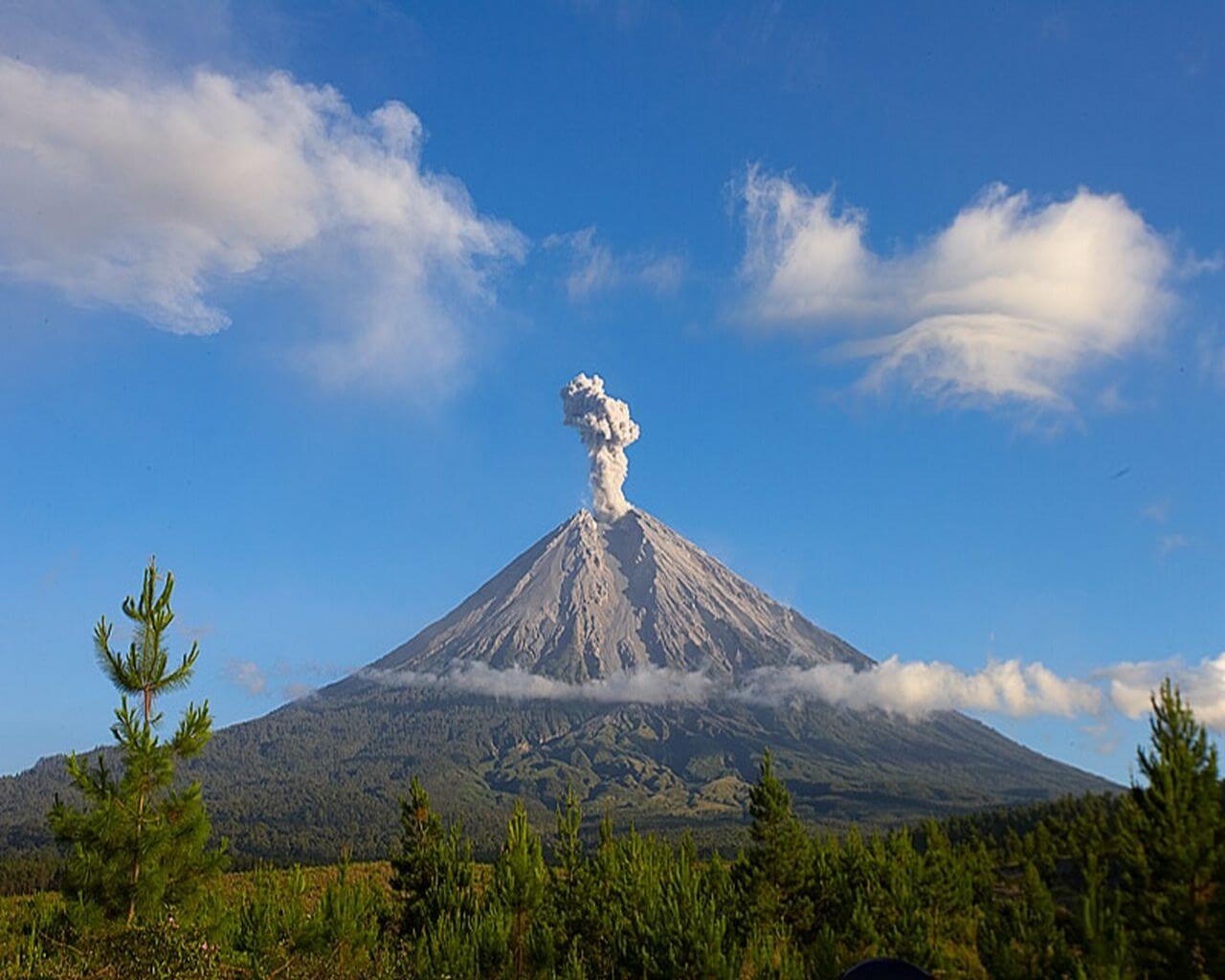Mount Semeru, the tallest volcano in Java, Indonesia, erupted on Saturday, killing 14 and injuring dozens, Indonesia’s disaster agency said on Sunday.
An official of the National Agency for Disaster Countermeasure, abbreviated as BNPB, said in a news conference late on Sunday that nine of the 14 casualties had been identified and that 56 people suffered injuries. In addition, around 1,300 people have been evacuated, while nine people remain unaccounted for, BNPB said.
Most victims sustained burn injuries, as people mistook the hot mudflow for flooding. “Locals here thought it was just usual floods. We did not know it was hot mud. All of sudden, the sky turned dark as rains and hot smoke came. Thankfully, it was raining so we could breathe,” a man searching for survivors told AFP.
The eruption spewed thick columns of ash more than 12 kilometres into the sky and blanketed at least 11 villages in East Java, including vehicles. It triggered panic among people and also destroyed buildings and infrastructure, including a strategic bridge connecting the nearby district of Lumajang with the city of Malang, along with another smaller bridge.
Rescue workers in the district of Lumajang continue to search for survivors. Some police and military officials were filmed digging through the debris for bodies with their bare hands. Rescue shelters have also been stocked with food, face masks, tarpaulins, and body bags.

However, Taufiq Ismail Marzuqi, a resident volunteer in the district of Lumajang, told Reuters that rescue efforts were “very dire” because of the destroyed bridge and volunteers’ lack of experience. Moreover, evacuation efforts have been obstructed by “choking smoke, a power blackout, and rainstorms during the eruption,” which has turned the debris into mud.
In fact, the head of Indonesia’s geological agency suggested that heavy rains “falling on the lip of Mt Semeru’s crater” are what actually caused the volcano to partially collapse and triggered the eruption. According to the agency’s data, there had been “no increase in seismicity” that suggested “any change in magma flow.”
Mt Semeru, which has been in a near-permanent state of eruption, regularly spews ash up to about 4,300 meters. However, Saturday’s eruption, which reached heights of up to 12 kilometres, was a “pretty significant increase in intensity,” Campbell Biggs, a meteorologist at the Volcanic Ash Advisory Centre (VAAC), based in Darwin, Australia, told the BBC.
WATCH: Indonesia’s Semeru volcano erupts, killing 13 and leaving houses and vehicles buried in ash https://t.co/hgKbOUmYp8
— CNA (@ChannelNewsAsia) December 5, 2021
(Video: APTN) pic.twitter.com/eMzxkbbgrp
Mt Semeru is 3,676 meters above sea level and among the country’s 130 active volcanoes. Its last eruption in December 2020 forced thousands of residents to take shelter. More recently, Mt Merapi, Indonesia’s most active volcano also located on the Java island, erupted in August but caused no casualties. However, the volcano’s last major eruption, in 2010, killed more than 350 people and displaced around 400,000 residents from surrounding areas.
Frequent volcanic activity in Indonesia is attributed to its location on the Pacific “Ring of Fire,” where continental plates meet. This causes frequent volcanic and seismic activity.

